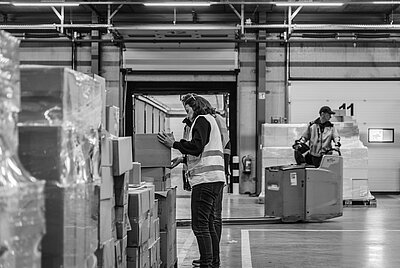This boom in mobile usage also resulted in, unsurprisingly, a rapid increase in mobile retail spending. Orders from social-referred channels increased in Italy by 291% in the second quarter of 2020. And while the jury is still out on whether these gains will remain in a post-pandemic world, there are lessons to be learnt from the rapid expansions in mobile retail.
Social commerce is the new e-commerce
It wasn’t just Italy that saw a dramatic increase in orders from social-referred channels. The UK saw an increase of 140% and Spain 93%. Similarly, mobile ad placements grew by 70% during the pandemic which points to one thing for retailers. Social commerce needs to be an essential focus of your retail strategy.
You might think that there is no real difference to consumers than e-commerce but with shoppers using mobile devices far more likely to abandon their cart in an e-commerce purchase than a desktop user, social commerce is an essential part of providing your consumers with seamless shopping experiences.
By simplifying your customer’s buying process and allowing them to purchase through social media sites, you can meet your customers exactly where they are and acquire and retain a demographic of shoppers who make faster transactions.
Make mobile payments simple
It’s not just people using their phones to shop online that is creating a mobile retail boom. Digital and mobile payments in Europe have increased 30% over the last three years – proof that the mobile device as a payment method is another essential part of any modern retail strategy.
Retailers need to ensure that their systems are compatible, and feasible, across a diverse market and borders. Some countries, like Denmark, are leading the way – with over 40% of transactions taking place within a digital wallet app. But others, like France, are languishing behind with just 15% of transactions taking place inside a digital wallet.
These varying adoption rates present a challenge to retailers who also need to take into account the different systems in use and each country’s preference for those systems. Some of the more popular systems like Apple Pay, PayPal and Klarna are more universally adopted but to create a truly seamless mobile retail experience, it requires investment across your retail borders and an understanding of what your customer is using currently, how they are using it and how this trend may be affected in the future.
Be ready to invest in technology
As a retailer, ensuring that your systems are synced with how your consumers want to pay is a priority in 2021 and beyond. With the creation of initiatives like the European Digital Identity Wallet and the increasing investment from banks in the European Payments Initiative, using digital technology that crosses borders and settles payments in real-time is a win-win for retailers and consumers alike.
Christmas purchasing this year may well be a completely different experience for retailers with consumers buying more online and paying on mobiles or using digital wallets in store to reduce spikes in spreading the Covid-19 virus. Faster transactions means happy customers and payments in real-time means greater financial security. For many retailers post-pandemic, the need for this security and transparency is essential.
While the technology is still under development to provide seamless real-time purchasing experiences across Europe, it is a technology trend that retailers would be well advised to keep an eye on. In the meantime, ensuring that your in-store point of sale system is ready to accept in-app purchasing and e-wallet payments means that you will be better prepared when these opportunities are available.
For advice on what trends could affect your store, speak to our team on +31 (0) 88 494 20 80 or email us at online@worldpack.eu


